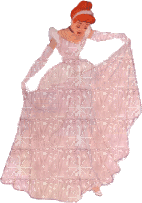FREE SOFTWARE
HISTORY
In the 50s, 60s, and 70s, it was normal for computer users to have the freedoms provided by free software. Software was commonly shared by individuals who used computers and by hardware manufacturers who were glad that people were making software that made their hardware useful. In the 70s and early 80s, the increasing complexity of software applications drove the industry to protect their investments through application of copyright law, and they began using technical measures such as only distributing binary copies to prevent computer users from being able to study and modify the software.
HISTORY
In the 50s, 60s, and 70s, it was normal for computer users to have the freedoms provided by free software. Software was commonly shared by individuals who used computers and by hardware manufacturers who were glad that people were making software that made their hardware useful. In the 70s and early 80s, the increasing complexity of software applications drove the industry to protect their investments through application of copyright law, and they began using technical measures such as only distributing binary copies to prevent computer users from being able to study and modify the software.
In 1983, Richard Stallman launched the GNU project after becoming frustrated with the effects of the change in culture of the computer industry and users. Software development for the GNU operating system began in January 1984, and the Free Software Foundation (FSF) was founded in October 1985. He introduced a free software definition and "copyleft", designed to ensure software freedom for all.Free software is a huge international effort, producing software used by individuals, large organizations, and governmental administrations. Free software has a very high market penetration in server-side Internet applications such as the Apache web server, MySQL database, and PHP scripting language. Completely free computing environments are available as large packages of basic system software such as the many Linux distributions and FreeBSD.
Free software developers have also created free versions of almost all commonly used desktop applications such as web browsers, office productivity suites, and multimedia players. It is important to note, however, that in many categories, free software for individual workstation or home users has only a fraction of the market share of their proprietary competitors. Most free software is distributed online without charge, or off-line at the marginal cost of distribution, but this is not required, and people may sell copies for any price.The economic advantages[citation needed] of the free software model have been recognised by large corporations such as IBM, Red Hat, and Sun Microsystems. Many companies whose core business is not in the IT sector choose free software for their Internet information and sales sites, due to the lower initial capital investment and ability to freely customize the application packages. Also, some non-software industries are beginning to use techniques similar to those used in free software development for their research and development: scientists, for example, are looking towards more open development processes, and hardware such as microchips are beginning to be developed with specifications released under copyleft licenses (see the OpenCores project, for instance). Creative Commons and the free culture movement have also been largely influenced by the free software movement.
EXAMPLES OF FREE SOFTWERE
Notable free software:
- Operating systems: Linux, BSD, Darwin, and OpenSolaris.GCC compilers, GDB debugger and C libraries.
- Servers: BIND name server, Sendmail mail transport, Apache web server, and Samba file server.
- Relational database systems: MySQL and PostgreSQL.
- Programming languages: Java, Perl, PHP, Python, Lua, Ruby, and Tcl.
- GUI related: X Window System, GNOME, KDE, and Xfce desktop environments.
- OpenOffice.org office suite, Mozilla and Firefox web browsers, and the GIMP graphics editor.
- Typesetting and document preparation systems TeX and LaTeX.ogg: free software multimedia file type that can function like an mp3 or mp4.
DEFINITION
The first formal definition of free software was published by FSF in February 1986 That definition, written by Richard Stallman, is still maintained today and states that software is free software if people who receive a copy of the software have the following four freedoms:
- Freedom 0: The freedom to run the program for any purpose.
- Freedom 1: The freedom to study and modify the program.
- Freedom 2: The freedom to copy the program so you can help your neighboor.
- Freedom 3: The freedom to improve the program, and release your improvements to the public, so that the whole community benefits.
- Freedoms 1 and 3 require source code to be available because studying and modifying software without its source code is highly impractical.












